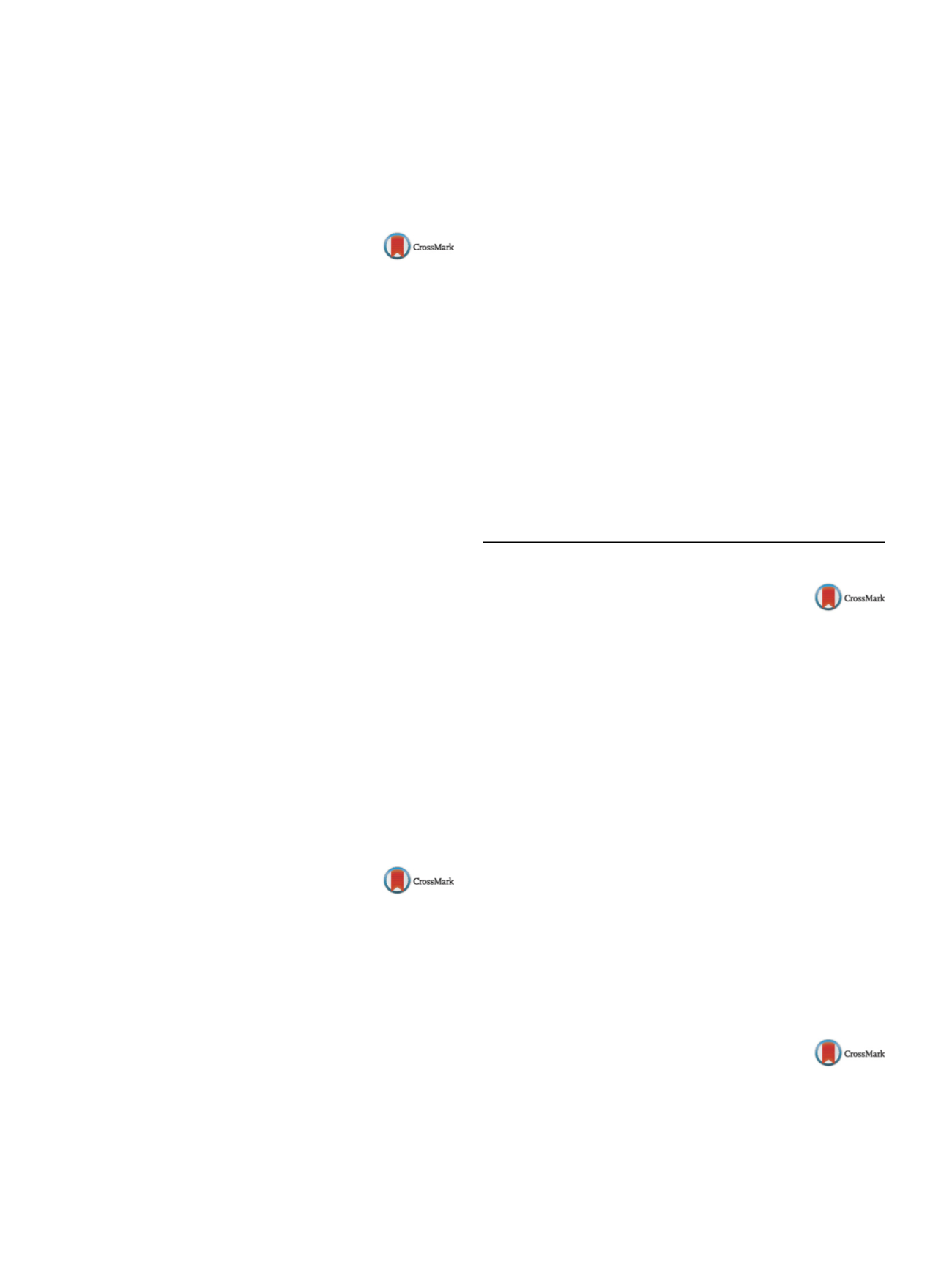

S126
25th European Congress of Psychiatry / European Psychiatry 41S (2017) S106–S169
trated by actigraphy. Studies investigating early ADHD risk factors
could lead to a preschool ADHD risk index to help guide future early
intervention.
Disclosure of interest
The authors have not supplied their decla-
ration of competing interest.
http://dx.doi.org/10.1016/j.eurpsy.2017.01.1929EW0061
Executive functioning, response
inhibition and attentional process
impairments in impulsive children
F. Mozaffarinejad
1 ,∗
, N .Nazarboland
21
BA, Clinical Psychology, Tehran, Iran
2
Shahid Beheshti University, Consulting, Tehran, Iran
∗
Corresponding author.
Impulsivity is a multidimensional concept that incorporates fail-
ure of response inhibition, rapid processing of information, novelty
seeking, and inability to delay gratification. Aggressive, suicidal and
violent behaviors have been shown to be associated with impulsi-
vity and difficulty in inhibiting responses. As explorers of executive
function (EF) and impulsivity research areas believe this two are
generally considered conceptually distinct, and suggest that they
may be antipodes (i.e., widely separated on a common contin-
uum, upon which they are related), We selected subjects with high
(
n
= 25) and low (
n
= 25) levels of impulsivity among 537 students
of ages 8 to 10 years-old, who were measured by Conners Teacher
Rating impulsivity Scale. Using computerized versions, response
inhibition was examined by their performance in a Go/No Go task,
general performance in executive functions (EF) was measured by
tower of London Test and continuous performance test (CPT) was
used to assess their attentional processes. Using independent t-
test and ANOVA, the results revealed that overall performance of
executive functions in impulsive children in all three areas were
remarkably damaged: they had impaired performance regarding
Go/No Go task results; also have consumed more time and com-
mitted more errors and a worse general performance; and had
more errors and weaker performance in attentional processes. The
results of this study along with similar results would be effective in
achieving a brighter image of impulsive children’s cognitive prob-
lems in order to provide efficient treatments focused on improving
their executive functions.
Disclosure of interest
The authors have not supplied their decla-
ration of competing interest.
http://dx.doi.org/10.1016/j.eurpsy.2017.01.1930EW0062
Assessing discomfort and avoidance of
social situations due to weight and
physical appearance in adolescents:
An exploratory factor analysis of a
new measure
M. Cunha
1 ,∗
, A.R. Costa
2, L. Palmeira
3, M. Couto
2, A. Galhardo
11
Miguel Torga Institute/CINEICC, Clinical Psychology, Coimbra,
Portugal
2
Miguel Torga Institute, Clinical Psychology, Coimbra, Portugal
3
FPCE University of Coimbra, CINEICC, Coimbra, Portugal
∗
Corresponding author.
Introduction
In adolescence experiencing weight and physical
appearance concerns is common. These body and weigh-related
preoccupations are associated with anxiety and may lead adoles-
cents to avoid social situations where their body image is exposed.
Aim
The present study aimed to conduct an exploratory factor
analysis and explore the psychometric properties of a new mea-
sure of social situations discomfort and avoidance due to weight or
physical appearance (DASSWPA) in a sample of adolescents.
Methods
The sample comprised 357 adolescents aged between
12 and 18-years-old, 195 males and 162 females, with a mean age
of 14.69 (SD = 1.68). Participants completed a set of self-reported
questionnaires concerning anxiety, stress and depression symp-
toms (DASS-21), bullying experiences (BIVES-A) and body image
related shame feelings (BISS).
Results
The DASSWPA is comprised of two separate scales: one
regarding discomfort/anxiety and another one related to avoidance
of social situations. Results suggested that both scales presented a
similar two-factor structure. Both scales revealed good psychomet-
ric properties, including high internal consistency (
˛
= 0.91) and
an excellent temporal stability. Moreover, DASSWPA showed sig-
nificant and positive associations with body image related shame
feelings, victimization experiences, and anxiety, stress and depres-
sions symptoms. Gender differences were also found, with girls
presenting significantly higher levels in the anxiety/discomfort
scale than boys.
Conclusion
The DASSWPA proved to be a reliable and stablemea-
sure to assess anxiety and avoidance of social situations due to one’s
physical appearance and weight in adolescents.
Disclosure of interest
The authors have not supplied their decla-
ration of competing interest.
http://dx.doi.org/10.1016/j.eurpsy.2017.01.1931e-Poster walk: Child and adolescent
psychiatry–part 2
EW0063
Medication effects on EEG biomarkers
in attention-deficit/hyperactivity
disorder
M. Cebi
∗
, N. ˙Isiten , B. Metin , B. Sütc¸ übas¸ ı , N. Tarhan
Uskudar University, Faculty of Humanities and Social Sciences,
Istanbul, Turkey
∗
Corresponding author.
EEG biomarkers have become increasingly used to aid in diagnosis
of ADHD. Despite several studies suggesting that EEG theta/beta
ratio may help discriminating ADHD from other disorders, the
effect of medications on theta/beta ratio is not known. Forty-three
children with ADHD that were evaluated with quantitative EEG
before and after methylphenidate were included in the study.
Theta/beta ratio, theta and beta powers for whole brain, central
and frontal areas were calculated. Theta/beta power decreased
significantly after treatment; however this change was largely due
to an increase in beta power, rather than a fall in theta power.
The results suggest that beta power is sensitive to medication
effects, while theta power remains as a trait biomarker unaffected
by medication status. The value of EEG biomarkers for monitoring
neuropsychological performance and clinical status should be
explored by future studies.
Disclosure of interest
The authors have not supplied their decla-
ration of competing interest.
http://dx.doi.org/10.1016/j.eurpsy.2017.01.1932EW0064
The association between problem
behaviors and Yin-Yang temperament
in Korean middle school students
S.J. Lee
1 , H.Chae
2 ,∗
1
Kyungil University, Department of Psychotherapy, Kyungsan,
Republic of Korea
2
Pusan National University, School of Korean Medicine, Yangsan,
Republic of Korea
∗
Corresponding author.


















